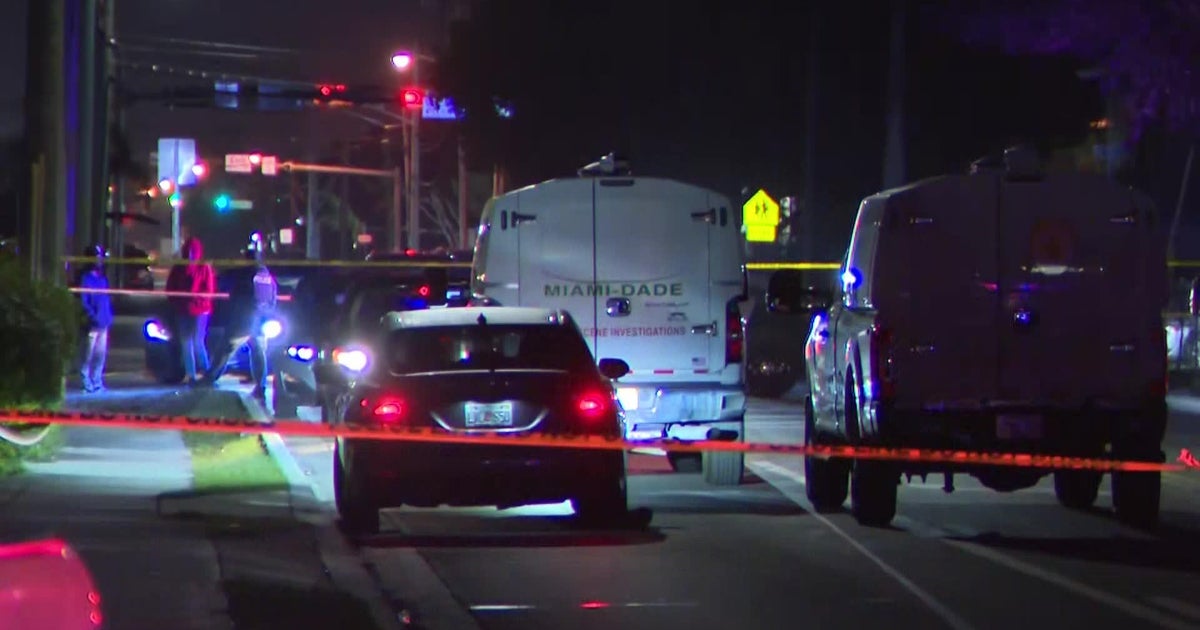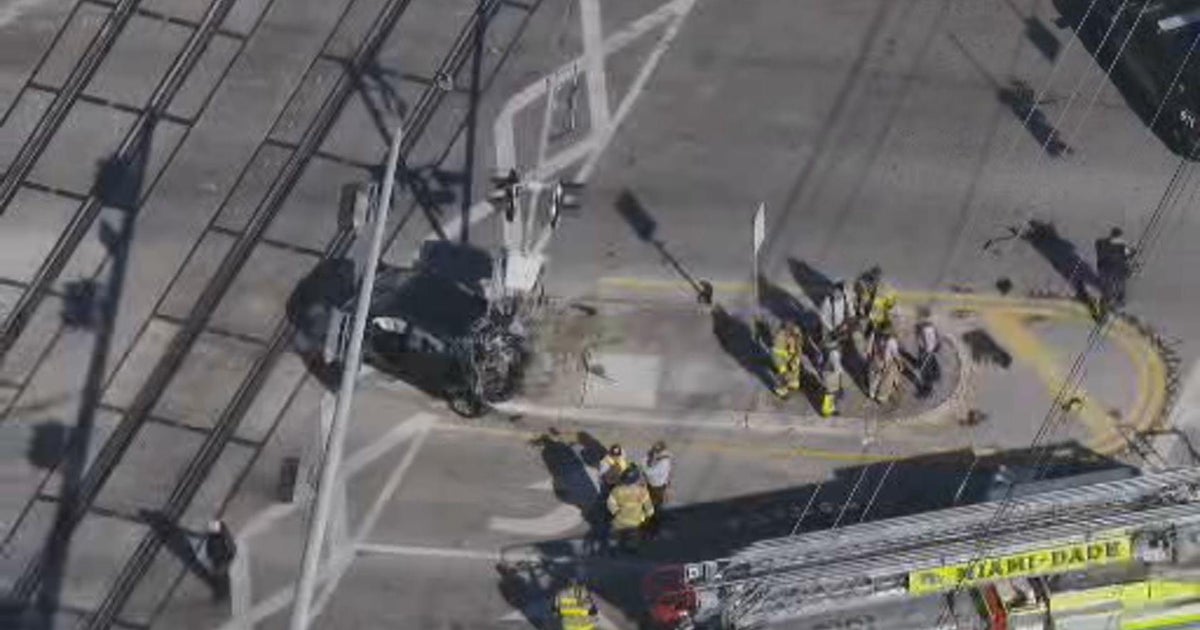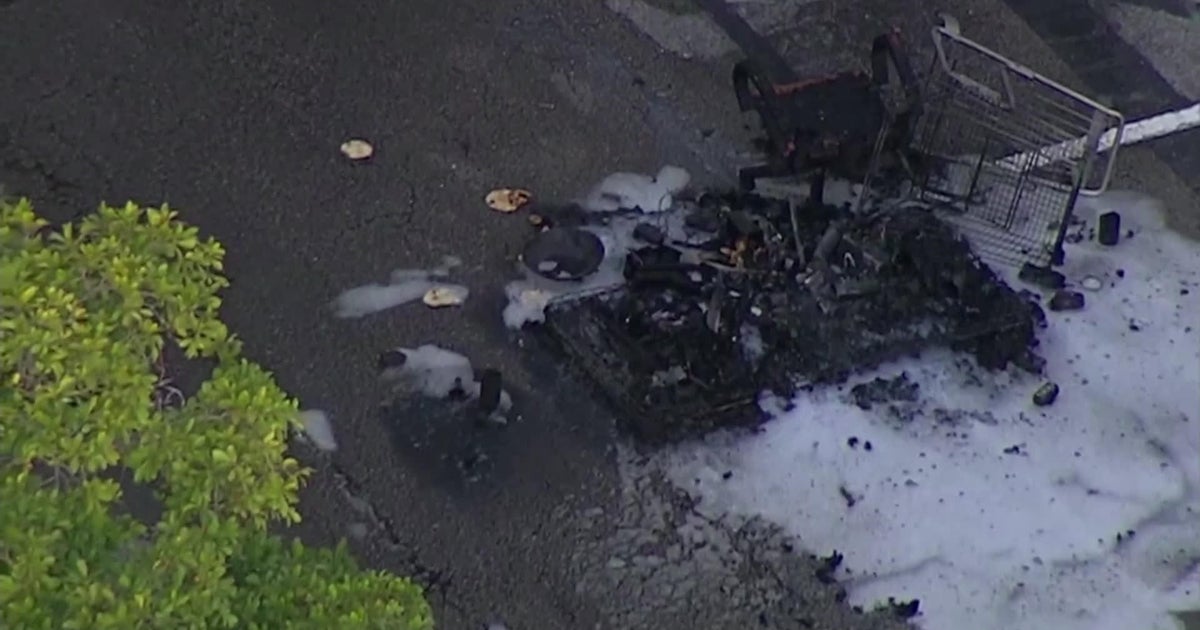Miami Beach Cops May Have Broken Their Own Rules In Shooting
Follow CBSMIAMI.COM: Facebook | Twitter
MIAMI BEACH (CBSMiami) – Miami Beach police appear to have violated their own policies and procedures while confronting a man armed with a straight edge razor Saturday, resulting in him being shot and killed by what is commonly known as "sympathetic gunfire," according to a CBS4 News investigation.
The shooting death of David Winesett, 51, a career felon who earlier in the day attempted to rob a bank, was captured by at least a dozen on lookers with cell phones. The video of the police shooting made national headlines and stirred the ongoing debate over police-involved shootings.
Winesett's death followed his failed attempt to rob a Miami Beach bank at 1414 Alton Road. Winesett fled the bank but was quickly confronted by police a block away, outside Razzledazzle Barbershop on Alton Road.
As police swarmed the area, a shirtless Winesett ran into the barbershop, began acting erratically, and grabbed a straight edge razor. When he emerged from the shop, he was confronted by police. For more than seven minutes police called for him to drop the razor but he refused to comply. Instead, the videos show a clearly agitated Winesett waving the razor and at one point appeared to make a gesture like he would cut his own throat.
As officers surrounded Winesett, an unidentified sergeant approached him. He could be heard talking to Winesett telling him to stay focused on him. As the sergeant approached he kept his hands by his side. Then, without warning, the sergeant, raised his right hand and fired a Taser. The prongs of the Taser could be seen in the video striking Winesett in the chest and he immediately stiffened as the electric current entered his body.
To the sergeant's left, and standing a few feet away, was a uniformed officer with an assault rifle trained on Winesett. The video, which lasts more than two minutes, appears to show the officer with his finger on the trigger of the rifle. Typically officers are trained not to place their finger on the trigger until the moment they fire to avoid an accidental discharge.
When the sergeant fired his Taser, it resulted in a loud noise, similar to the crack of a bat. Six-tenths of a second after the Taser's crack can be heard, the officer with the assault rifle pulled the trigger and fired the first shot into Winesett, who was already falling backward from the Taser. After another seven-tenths of a second, as Winesett's hit the ground, the officer fired a second round from the assault rifle killing Winesett.
In a review of the shooting, CBS4 News found that the critical moment was the deployment of the Taser. Here is the relevant section from Miami Beach Police Department's "Use of Force" policy on what should occur prior to firing the Taser, also known as an Electronic Control Device (ECD):
"Verbal warnings shall be issued to the subject prior to deploying the ECD to allow him the opportunity to comply with the officer's commands, unless the warning would provide a tactical advantage to the subject being taken into custody."
"In addition to the verbal warnings to the subject, the deploying officer shall announce: `Taser' to alert others of the impending use of the ECD."
The reason the officer is required to "announce Taser" immediately prior to firing is so that the officers in the area realize the Taser is about to be deployed and do not mistake it for gunfire.
And indeed, it appears that the officer with the assault rifle was responding to the sound of the Taser being fired and not to anything Winesett was doing at that exact moment. Such a scenario is not uncommon and is known as "sympathetic gunfire" or "contagious gunfire," because the officer firing is only doing so because he believes his fellow officers have identified a threat and may need assistance.
The shooting is now being investigated by the Miami-Dade Police Department. Miami Beach Police officials declined to comment Monday on the latest details in the case nor have they identified the sergeant who fired his Taser or the officer with the assault rifle.
Robert Jenkins, president of the Fraternal Order of Police, the union representing Miami Beach police officers, said he was "confident" the officers handled themselves appropriately.
"Our nation is enduring very troubling times and as law enforcement officers, we must take every threat very seriously," he said in a written statement. "In this case, a wanted fugitive expressed that he was in possession of a bomb as he attempted to rob a Bank of America on Alton Rd. After a lengthy stand-off, violent and erratic behavior and his refusal to comply with officers, shots were fired and the fugitive was pronounced dead. The Miami Beach Fraternal Order of Police is confident that all involved acted bravely in order to protect the Miami Beach community and our visitors. We fully support a third party investigation by the Miami Dade Police Department's Homicide Bureau in order to make a fair and just assessment."
The shooting also raises the question as to whether Miami Beach police could have used other, non-lethal weapons to subdue Winesett. And do they even have those type of weapons – such as a bean bag-shotgun – which can knock the wind out of a person? Turns out, Miami Beach Police do not provide those types of weapons to their patrol officers.
Click here to view Miami Beach Police's Use Of Force policy.
CBS4 received the following e-mail on Tuesday, 12/8/15 at 4:25pm from the Fraternal Order of Police, in reference to our story on the police-involved fatal shooting on Miami Beach.
In light of the recent MBPD police involved shooting and the citations of our policy, we would like to offer some clarification for the portions of the policy which were cited.
"Verbal warnings shall be issued to the subject prior to deploying the CEW to allow the opportunity to comply with the officer's commands, unless the warning would provide a tactical advantage to the subject. (1) In addition to the verbal warnings to the subject, the deploying officer shall announce "Taser" to alert others of the impending use of the CEW."
FOP COMMENT: In this case, where the subject fled the scene of a bank robbery where he claimed he had a bomb, threatened to shoot someone, entered a barbershop, armed himself, then exited and threatened officers with a street full of pedestrians, the Officer could not risk announcing his intentions to deploy the CEW as it may have caused Mr. Winesett to flee yet again and put police officers and citizens at risk.
ADDITIONAL INFORMATION:
Regarding the officer with the finger on the trigger, SOP 007, page 9 of 14, C 1 a, "Employees shall keep their fingers outside the trigger guard unless deadly force is justified. Deadly force is defined as force that is likely to cause death or great bodily harm as defined in FS 776.06.
According to SOP 017, Deadly force shall be used when an officer perceives, based on objective reasonableness, that the action is in defense of human life. This includes the officer's own life or in defense of any person in immediate danger of great bodily harm. An officer shall use the following criteria when making the decision to use deadly force:
- Ability – the subject has the means to carry out his intent to cause death or great bodily harm;
- Opportunity – the subject is capable of carrying out an intention to cause death or great bodily harm to the officer or others;
- Intent – reasonably perceived, imminent threat to an officer or another person based on the subject's actions, behaviors, words or other indicators.
FOP STATEMENT FROM PRESIDENT BOBBY JENKINS
"Luckily for these officers, who made an oath to serve and protect, their actions will be evaluated against the objective reasonableness standard established by the United States Supreme Court in Graham V. Connor, which states that the "reasonableness" of a particular use of force must be judged from the perspective of a reasonable officer on the scene, rather than with the 20/20 vision of hindsight." or 48 hours of film study down to the hundredths of a second.
Although the loss of life of any human being is tragic regardless of the person's criminal history, let us not lose sight of the fact that on Saturday morning, Mr. David Winesett made a series of consciously bad decisions. As far as the actions of our officers are concerned, the public has the luxury of drawing conclusions based on the limited information that is available. What most are not privy to, are the details of the prolonged negotiation time that unfolded between all of our officers and this escaped criminal. This is why it is important to allow for a third party investigation to determine the outcome of this incident."



